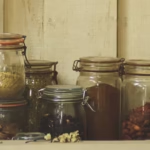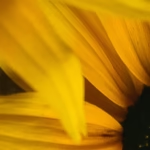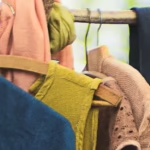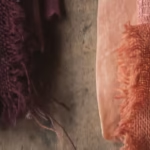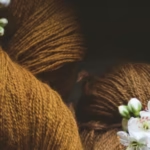Is natural dyeing always environmentally friendly?
In botanical dyeing, the mordant is often indispensable. The most widely used is alum or aluminum salts. Is it possible to mordant without alum? That’s the question I asked myself when I first tried my hand at botanical dyeing.
Is ecological dyeing natural ? Is botanical dyeing environmentally friendly ? Is it possible to use alum as a natural, ecological and botanical dye?
I’ve had so many questions that I’ve turned in all directions to dye my wool or silk yarns, and my textiles… In this article, I summarize the fruit of my reflections that led me to alum-free mordanting.
Contents
- What is a mordant? What is mordanting? What does a mordant do?
- Ecological dyeing, natural dyeing – what exactly are we talking about?
- Alum as a mordant in botanical dyes does not necessarily rhyme with ecology
- Alum-free mordanting for more eco-friendly 100% natural dyeing
1. What is a mordant? What is mordanting? What does a mordant do?
There are several definitions of a mordant. The term comes from the Latin mordere, “to bite”.
A recognized definition of mordant in dyeing is as follows: “Substance that fixes a dyestuff in or on a material by combining with the dye to form an insoluble compound, used to fix or intensify stains in a tissue or cell preparation” (Glossary for chemists of terms used in toxicology, p. 2071).
Mordanting is the stage, usually carried out beforehand, at which the mordant is applied to the fiber.
The main goal of the mordant is to make the color last.
2. Ecological dyeing, natural dyeing, what exactly are we talking about?
The textile industry is one of the world’s most polluting industries after the food industry. And fashion, especially dyeing, is one of the ten most polluting industries in the world.
In this context, some textile designers have adopted a eco-responsible approach to explain the traceability of their products and their impact on the environment and health.
This is why labels such as öko-tex have appeared. They limit the damage by eliminating carcinogenic colorants, allergenic substances and heavy metals. We’re delighted.
Yet these new colorants are made from synthetic products derived from petroleum.
For this reason, so-called ecological dyeing does not always mean natural dyeing.
But is natural dyeing necessarily eco-friendly? This is the question I asked myself when I first became interested in plant color, particularly with the use of alum.
3. Alum as a mordant in botanical dyeing does not rhyme with ecology
Before the advent of synthetic chemistry in the mid-19th century, all colors were made from plants. Ancestral knowledge that has colored centuries past.
Dominique Cardon (link in French), a researcher at the CNRS, has explored the wonderful world of natural colors throughout the world and the history of cultures. A fascinating universe.
Thanks to her, I’ve become interested in plant dyeing processes as they have been practiced for centuries.
The first step in the dyeing process is mordanting.

3.1 What is a botanical dye mordant?
This is a decisive step in creating the affinity between the fiber to be dyed and the plant dye. The mordant creates a solid bond between the plant dye and the fiber to be dyed so that the color holds. In other words, the mordanting will help the color last over time. The mordant is a kind of fixative.
Metal ions mainly play this fixing role.
This is why dyers of the past traditionally used aluminum, copper, and iron sulfates, as well as chromium, tin and lead, to fix their colors.
Today, the use of heavy metals such as tin, lead and chromium as mordanting agents has been abandoned because of their impact on health.
But what about aluminum, known as alum, which is used by many today for mordanting botanical dyes?
3.2 Alum is a mordant in botanical dyes
Alum as a mordant comes in the form of salts, alum salts, or aluminum salts. A white powder that is either naturally occurring or synthesized. In its natural form, it’s potassium alum (KAl (SO4)2), known in cosmetics as alum stone. In its synthetic form, it’s aluminum sulfate (Al2 (SO4)3).

On the one hand, whatever their method of manufacture, these aluminum salts come from bauxite quarries, the exploitation of which, particularly in southern countries, is disastrous for the environment and local populations.
On the other hand, the harmlessness of aluminum in salt form for our health is debated.
From then on, the use of alum salts as a mordant quickly put me off. In addition to its harmful effect on nature and health, all the precautions required to handle this white powder, such as wearing gloves and a mask, initially scared me a little.
Then there’s the question of where to dispose of the mordant bath without risk of pollution.
Under these conditions, can we still say that a natural color, mordanted with alum, is an ecological color?
In my opinion, a natural color is a color derived from plants, without any synthetic additives. It’s a color made exclusively from natural materials, renewable where possible, and without risk to the environment or health.
As a result, natural dyes are not necessarily environmentally friendly. The mordanting stage is often unavoidable. It’s all about a color that’s plant-based, ecological, and natural.
4. Alum-free mordanting for a more ecological 100% natural plant dye
Are there any alternatives to using alum as a mordant? The answer is yes.
4.1. botanical dyeing without mordant
There are all the plants that can be used to dye textiles without the need for mordant. The best known are avocado for pink, turmeric for yellow, and onion for pinkish-brown.
4.2. Indigo
We also find all the indigo plants. Except in the world of plant dyes, indigo is a process without mordanting.
What about other plants, other colors? The mordanting stage is essential.
4.3. Mordanting plants for alum-free mordanting
To do without alum salts, we use certain plants that act as mordants.
Thanks to their special chemical compounds, they help create the alchemy that unites the natural colorant with the natural fiber.
Plants rich in alumina
Like symplocos (link in French), some plants have the ability to store alumina naturally present in the soil in their aerial parts.
Aluminum is one of the most abundant elements in the earth’s crust. In a certain type of biotope, these plants implement a survival strategy by drawing on the alumina present in the soil in large quantities.
The leaves and sometimes the bark of these plants are naturally rich in alumina. An organic form of alumina synthesized by plants. A molecular structure that has nothing in common with alum salts.
This is why the leaves and bark, naturally loaded with alumina, can be decocted and used as an alum-free mordant.
Plants rich in tannins
We also find plants rich in tannins. They can also be very useful for fixing color and improving lightfastness. They are numerous: gallnut, myrobolan…
Plants rich in oxalic acid
Finally, other plants rich in oxalic acid can also play a mordant role: dock, rhubarb, or beetroot. The latter makes the phytolacca solid, despite its reputation for not holding up.
So there are alternatives to alum. In other times and places, dyers haven’t always used alum to make color. Colors were made from local resources, and not everyone had access to alum stone.
Dominique Cardon (link in French), Director of Research at the C.N.R.S., specializes in the history and archaeology of textiles and dyeing.
It took a lot of reading, experimentation, and research to figure it out:
– what happens in a dye bath.
– how the hidden color of plants can be revealed through the ingenuity of plant alchemy.
And to lead me towards alum-free mordanting, which I’m sharing with those who want to take part in a 100% botanical dyeing workshop (link in French).
